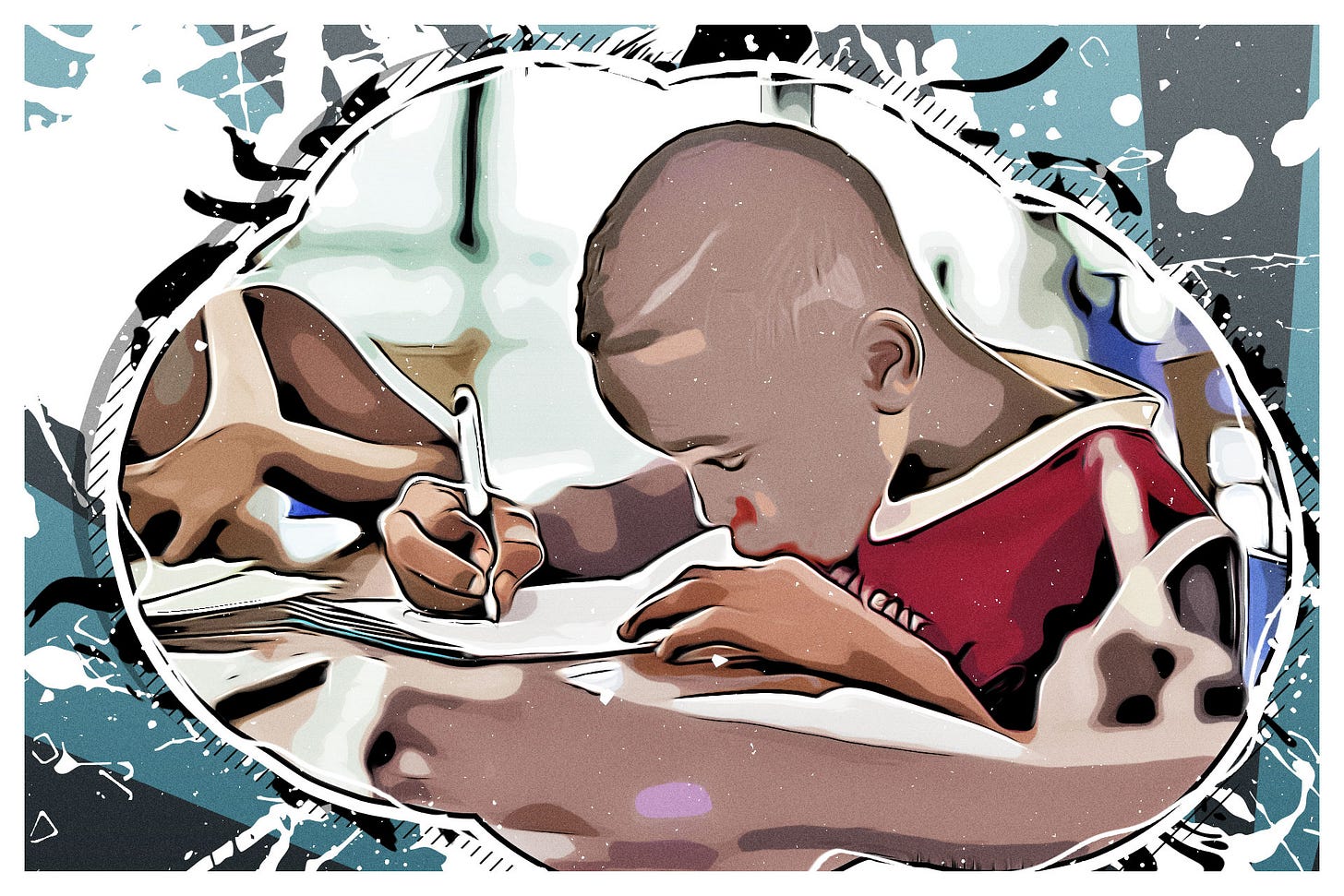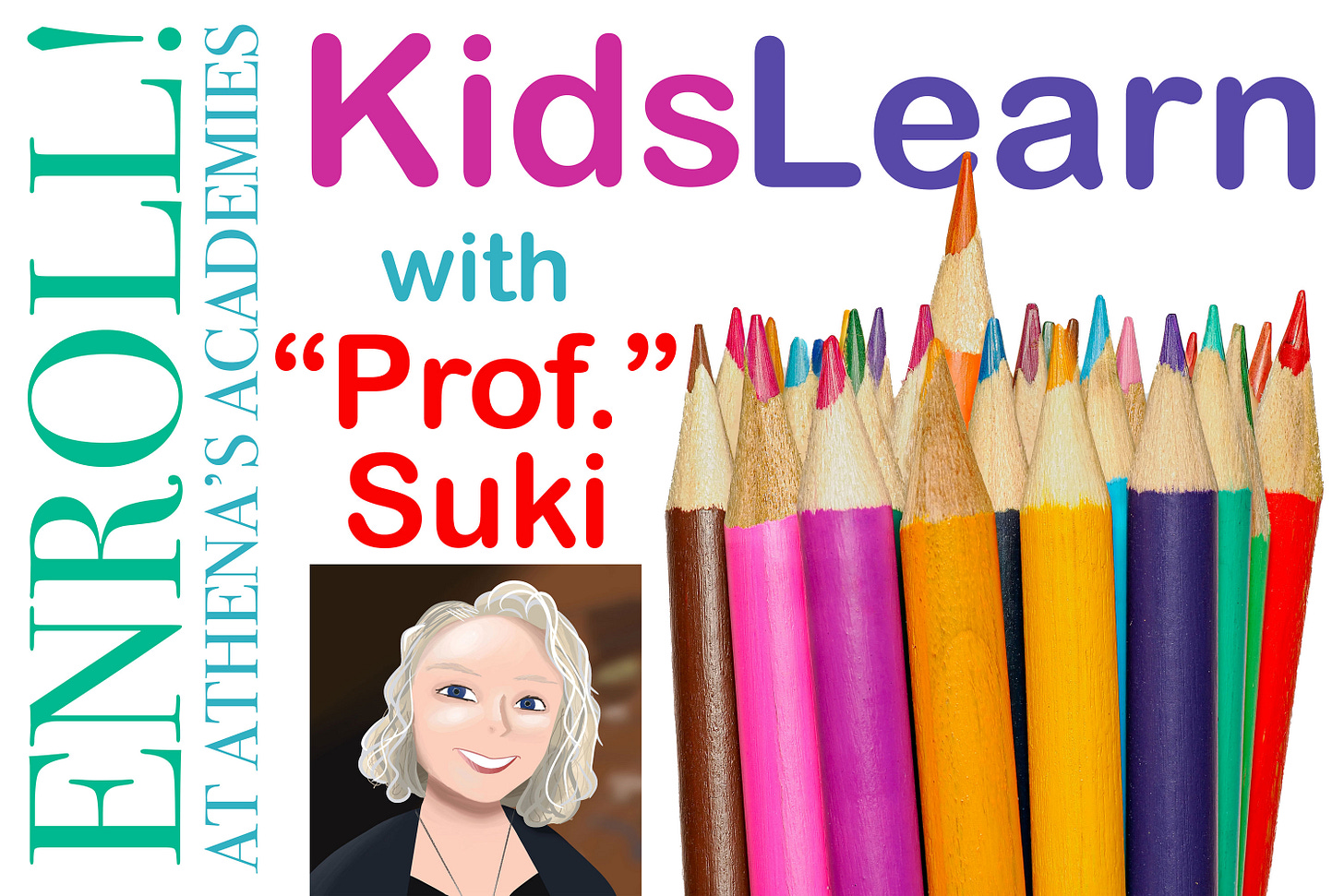The KidsLearn Substack is written by Suki Wessling, known as “Prof.” Suki to her students. Scroll to the bottom for links to Suki’s work and more information.
AI-generated writing is like telling a starving person that a box full of Twinkies is just as nutritious as a modest, homemade stew. AI-generated expressive writing is not important and never will be.
~ Prof. Suki
My students are living in a world I couldn’t have imagined as a child. Everything is so easy for them… or so it seems. They can ask an AI tool to write their presentation.1 They can get an AI tool to generate art for their story.2 They can get AI to do their math for them.
So what’s the point of doing academic work at all? Why learn anything but how to write an AI prompt?
Interested in more about AI? On my other Substack, The Babblery, I’ve been writing more deeply about AI in our lives (here and here). On my KidsLearn podcast for kids you can find the companion to this article to share with your kids: “Kid writing is beautiful—don’t use AI.”
There is value in the process
Modern education is very product-focused. We want to see the results of education in stuff and numbers. Stuff gets sent home to prove work was done; numbers get calculated to prove the teacher’s worth or the school’s success.
But all good educators know that the important part of education is the process. Any student can be trained to spit out a product, but that product will only have value if they undergo the process behind it. Product without a useful process is just busywork.
In the teaching of writing, it’s very easy to give kids a formula and have them spit out 5-paragraph essays in short order. But if you really want kids to learn writing, a slower, more creative process has more impact. They need to read lots of good writing. They need to talk about subjects and ideas. They need to learn to spit words out and not worry about whether they follow a formula. They need to learn to look at a mess of ideas and find the central points.

There is value in the struggle
Right now I am struggling to do what I insist my students do every time we meet. I’m struggling to spit words out without regard to whether they are “good,” whether my ideas are well-argued, or whether I will end up using them in my final product. The value of this struggle is clear: students who learn how to do this never suffer from writer’s block. As I tell them, “If you’re writing, you don’t have a block.” The fact that what they’re spitting out is currently crap, well, we’re ignoring that for now!
Another struggle that has value is the struggle to find and justify your opinions. Young people often have vague ideas of what they believe is correct, but those ideas will remain vague unless they can put them down in words and justify them. I’ll admit it: this is hard. I do it every single day and it never gets easier. But it’s necessary: Expressing your ideas is a fundamental part of becoming an educated person.
Finally, there’s the struggle in your brain to create new pathways. I’ve had students say things like, “OK, this is totally breaking my brain” when we talk about ideas they’ve never considered. I know the feeling. When you are struggling to learn, your brain is growing new pathways, and that can be very, very uncomfortable!
Why I despise the 5-paragraph essay
But let’s face it, teachers are the true victims of the ubiquitous torture we call the 5-paragraph essay. We’re told to teach students how to write it, and then—in a horror not surpassed by standing in line at the DMV without an appointment—we have to read and grade them.
There is value in the product
When a human being has gone through a process of learning, and especially if that process has been a struggle, that process adds value to the product. There is no value to standard 5-paragraph essays because there is little or nothing in them that came from the child’s head and expresses their being. But when a child goes through the process of learning about, discussing, exploring, and evaluating information and ideas, the writing they produce has intrinsic value.
The flaws in the writing they produce are proof of its value. The flaws show the current state of the child’s learning and abilities. The flaws encourage future growth and exploration. They allow for a student to look back a year later and be amazed at how far they’ve progressed.
There is value in the human element
Kid writing is amazing. Some of it is deeply weird. Much of it is awkward and ill-formed. It can be shocking. It can be hilarious. It can sometimes ramble on for a very long time. Kid writing can be anything that kids can be. And this is the most important point. Human-made products are intrinsically more valuable than artificially created products because they represent the human behind them. There’s a reason why I can buy a hundred plastic cups, all the same and all perfect, for a fraction of the cost of one homely handmade ceramic mug.
Allowing kids to use AI to do their work tells them that their work has no value, that a tool that generates the next most expected word is somehow more thoughtful than they are, more eloquent than they are, and more worthy of our attention. Letting kids think that an AI is better than they are is fundamentally damaging to their sense of self and worth.
Do your students use AI? Why or why not?
This piece was inspired by two thought-provoking Substacks. When I read “The Third Humbling of Humanity,” I had to resist the temptation to believe that Yascha’s piece was itself generated by AI and he was just playing with us. “Algorithms are killing coincidences” continues to stick with me as a fine thought piece about modern life. I recommend them both:

I’m sure one of my students did this though he wouldn’t admit it. No kid writes such incredibly bland, trite crap as he submitted.
Another student wanted to submit AI-generated art and was surprised to hear that his teachers don’t accept AI art as, uh, art. Or real.









